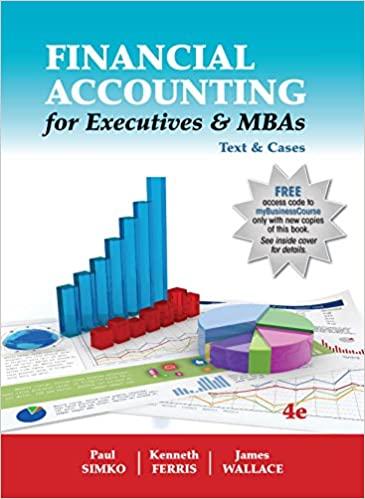Answered step by step
Verified Expert Solution
Question
1 Approved Answer
Mr. Coleman, an unmarried individual, has the following income items: Interest income $ 24,700 Schedule C net profit 53,360 AGI = 74290 He has $9,550
Mr. Coleman, an unmarried individual, has the following income items:
| Interest income | $ 24,700 |
|---|---|
| Schedule C net profit | 53,360 |
AGI = 74290
He has $9,550 itemized deductions and no dependents. Mr. Colemans Schedule C income is qualified business income (non-service).
1. What is his taxable income?
2. What is his income tax?
Extra INFO:
| Married filing jointly and surviving spouses | $25,100 |
|---|---|
| Married filing separately | 12,550 |
| Head of household | 18,800 |
| Single | 12,550 |
Individual Tax Rate Schedules
Married Filing Jointly and Surviving Spouse
| If taxable income is | The tax is |
|---|---|
| Not over $19,900 | 10% of taxable income |
| Over $19,900 but not over $81,050 | $1,990.00 + 12% of excess over $19,900 |
| Over $81,050 but not over $172,750 | $9,328.00 + 22% of excess over $81,050 |
| Over $172,750 but not over $329,850 | $29,502.00 + 24% of excess over $172,750 |
| Over $329,850 but not over $418,850 | $67,206.00 + 32% of excess over $329,850 |
| Over $418,850 but not over $628,300 | $95,686.00 + 35% of excess over $418,850 |
| Over $628,300 | $168,993.50 + 37% of excess over $628,300 |
Married Filing Separately
| If taxable income is | The tax is |
|---|---|
| Not over $9,950 | 10% of taxable income |
| Over $9,950 but not over $40,525 | $995.00 + 12% of excess over $9,950 |
| Over $40,525 but not over $86,375 | $4,664.00 + 22% of excess over $40,525 |
| Over $86,375 but not over $164,925 | $14,751.00 + 24% of excess over $86,375 |
| Over $164,925 but not over $209,425 | $33,603.00 + 32% of excess over $164,925 |
| Over $209,425 but not over $314,150 | $47,843.00 + 35% of excess over $209,425 |
| Over $314,150 | $84,496.75 + 37% of excess over $314,150 |
Head of Household
| If taxable income is | The tax is |
|---|---|
| Not over $14,200 | 10% of taxable income |
| Over $14,200 but not over $54,200 | $1,420.00 + 12% of excess over $14,200 |
| Over $54,200 but not over $86,350 | $6,220.00 + 22% of excess over $54,200 |
| Over $86,350 but not over $164,900 | $13,293.00 + 24% of excess over $86,350 |
| Over $164,900 but not over $209,400 | $32,145.00 + 32% of excess over $164,900 |
| Over $209,400 but not over $523,600 | $46,385.00 + 35% of excess over $209,400 |
| Over $523,600 | $156,355.00 + 37% of excess over $523,600 |
Single
| If taxable income is | The tax is |
|---|---|
| Not over $9,950 | 10% of taxable income |
| Over $9,950 but not over $40,525 | $995.00 + 12% of excess over $9,950 |
| Over $40,525 but not over $86,375 | $4,664.00 + 22% of excess over $40,525 |
| Over $86,375 but not over $164,925 | $14,751.00 + 24% of excess over $86,375 |
| Over $164,925 but not over $209,450 | $33,603.00 + 32% of excess over $164,925 |
| Over $209,450 but not over $523,600 | $47,843.00 + 35% of excess over $209,425 |
| Over $523,600 | $157,804.25 + 37% of excess over $523,600 |
Step by Step Solution
There are 3 Steps involved in it
Step: 1

Get Instant Access to Expert-Tailored Solutions
See step-by-step solutions with expert insights and AI powered tools for academic success
Step: 2

Step: 3

Ace Your Homework with AI
Get the answers you need in no time with our AI-driven, step-by-step assistance
Get Started


